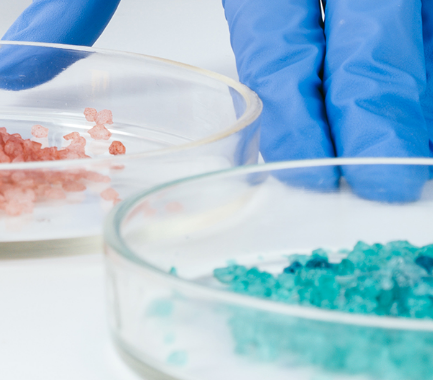Your contact
PENPET-Team - Hamburg

Tim Meister
Sales
Tel. +49 (0) 40 - 675 7 99 40
sales@penpet.de
Get in touch with us.
para-tert. Butylphenol (PTBP)
para-tert. Butylphenol belongs to the chemical class of phenols and is mainly used in industry for the production of synthetic resins. The compound results from a reaction of tert-butanol with phenol, which is carried out industrially at high pressure and temperatures of 250 °C. Alternatively, it can be obtained from isobutylene and phenol.
In the chemical industry para-tert. butylphenol is primarily used as a monomer in the manufacture of complex plastics and synthetic resins. Among other things, the compound is important for the production of epoxy resins and phenolic resins, which are used as hardeners in coatings, adhesives and paints.
At PENPET you can reliably order the required quantity of para-tert. butylphenol from stock. We look forward to receiving your inquiry for an individual offer. It is delivered in the form of crystalline scales, either in 25 kg bags or in 500 kg Big Bags.
CAS no. 98-54-4
EINECS no. 202-679-0
Molecular formula: C10H14O
Synonyms: 4-tert-butylphenol, 1-tert-butyl-4-hydroxybenzene, p-tert-butylphenol, 4-(1,1-dimethylethyl)phenol, butylphen, 1-hydroxy-4-tert-butylbenzene, para tertiary butylphenol, PTBP
Application examples: Production of epoxy resins, phenolic resins and polycarbonates, use as plasticizers
More Information
Para-tert. butylphenol consists of a phenol structure plus a tert-butyl group. This is attached to the carbon atom which is directly opposite the hydroxy group of the phenol. Para-tert. butylphenol is therefore only one of the three isomeric forms of tert. butylphenol. These isomers are distinguished by the position of the attached tert-butyl on the hexagonal ring of carbon atoms and the consequent distance of this component from the hydroxy group. During the manufacture of para-tert. butylphenol, proportions of the other two isomers 2-tert. butylphenol and 3-tert. butylphenol can also form.
Para-tert. butylphenol has only one functional group with the hydroxy group of phenol and is therefore used in polymerizations to terminate chain structures. In this way, the size and the molecular weight of the polymers formed can be regulated.
Para-tert. butylphenol is a white solid with an odor typical of phenol. The compound is only slightly soluble in water. Good solvents for para-tert. butylphenol, on the other hand, are ethanol, chloroform and diethyl ether.
Under the recommended storage conditions, para-tert. butylphenol is stable. The substance decomposes on heating releasing carbon dioxide and carbon monoxide. Para-tert. butylphenol is combustible, but not flammable in its pure form. However, the risk of explosion can arise from the formation of dust-air mixtures.
Despite the presence of a hydroxy group, para-tert. butylphenol does not behave like an alcohol but, like other phenolic compounds, more like a weak acid. It should not come into contact with strong reducing agents such as hydrides, nitrides or alkali metals.
Para-tert. butylphenol causes severe irritation to the skin, respiratory tract and eyes. Direct contact can cause serious damage to the eye. Prolonged or repeated skin contact can cause long-term sensitization, dermatitis and pigment disorders such as leukoderma. Ingestion of para-tert. butylphenol and intensive skin contact can lead to organ damage. Butylphenol is also suspected of impairing fertility and the health of a child in the womb.
Para-tert. butylphenol is very toxic to aquatic organisms and causes long-term damage in the aquatic environment, including by affecting the hormonal balance of fish. Avoid releasing the compound into the environment.
